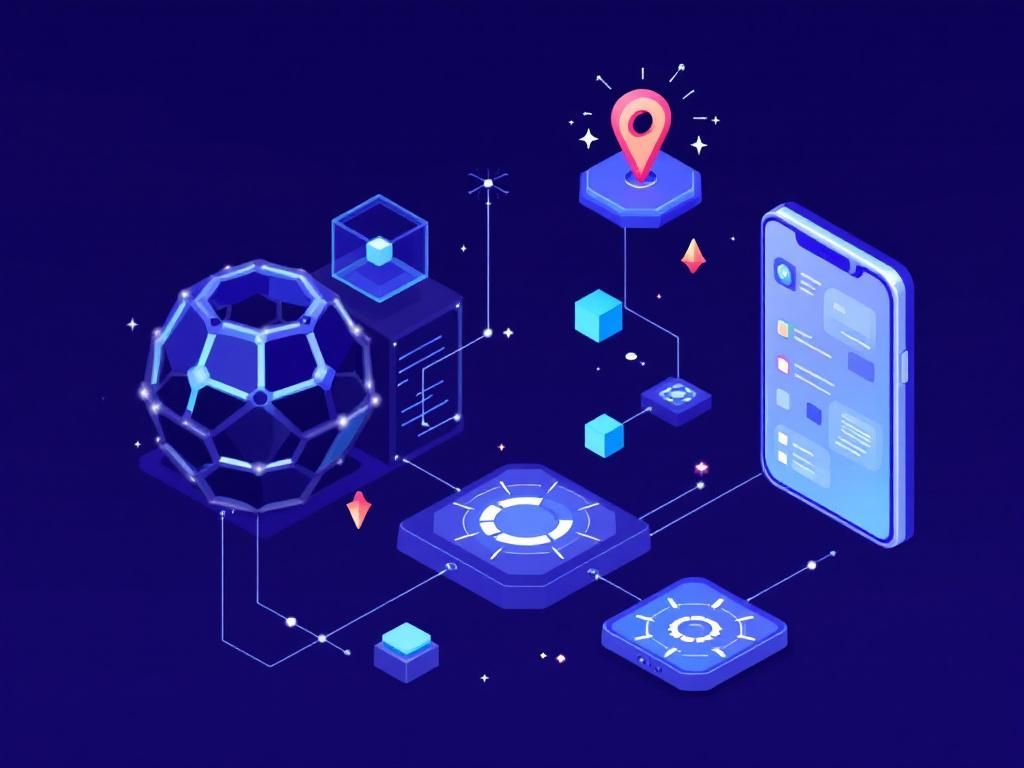With the rapid evolution of machine learning (ML) technologies, deploying these models on edge devices has become increasingly critical. Edge devices, such as smartphones, IoT sensors, and embedded systems, offer unique advantages, including reduced latency, lower bandwidth usage, and enhanced privacy. This article delves into best practices, tools, and strategies for deploying ML models on edge devices in 2025, ensuring optimal performance and efficiency.
Understanding Edge Computing
Edge computing involves processing data near the source of generation rather than relying on a centralized data center. This architecture is particularly beneficial for applications that require real-time analytics. Here are some key benefits of edge computing:
- Low Latency: Immediate processing of data minimizes delays.
- Reduced Bandwidth: Less data is sent to the cloud, saving on network costs.
- Enhanced Privacy: Sensitive data can be processed locally, improving security.
- Reliability: Local processing can continue even if the network connection is unstable.
Key Considerations for ML Deployment on Edge Devices
When deploying ML models on edge devices, several factors must be taken into account:
Model Size and Complexity
Edge devices often have limited computational power and storage. Thus, it’s essential to optimize your ML models to fit these constraints:
- Model Compression: Techniques such as pruning and quantization can significantly reduce model size.
- Lightweight Architectures: Consider using models specifically designed for edge computing, such as MobileNet or TinyML variants.
Energy Efficiency
Edge devices are frequently battery-operated. It’s crucial to ensure that the deployed models consume minimal power:
- Use Efficient Algorithms: Choose algorithms that require less computational power and resources.
- Implement Adaptive Computation: Allow models to dynamically adjust their complexity based on available resources.
Security and Privacy
Protecting user data is paramount. Security measures should be embedded in the deployment strategy:
| Security Measure | Description |
|---|---|
| Data Encryption | Encrypt data both in transit and at rest. |
| Secure Boot | Ensure the device only runs authenticated software. |
| Regular Updates | Deploy updates to fix vulnerabilities and improve security. |
Development Tools and Frameworks
Utilizing the right tools can streamline the deployment process. Here are some popular frameworks for ML deployment on edge devices:
TensorFlow Lite
TensorFlow Lite is a lightweight version of TensorFlow designed specifically for mobile and embedded devices. Key features include:
- Model optimization through quantization and pruning.
- Support for a wide range of platforms, including Android and iOS.
- Integration with existing TensorFlow models.
Pytorch Mobile
Pytorch Mobile allows you to run PyTorch models on mobile devices. It offers:
- Easy transition from model training to deployment.
- Dynamic quantization to reduce model size and improve inference speed.
- Support for both Android and iOS.
Apache MXNet
Apache MXNet is another framework optimized for efficiency on edge devices. Its advantages include:
- Multi-language support, including Python, Scala, and Julia.
- Built-in support for model quantization and pruning.
- High performance on CPU and GPU.
Deployment Strategies
Once the ML model has been developed and optimized, the next step is to deploy it effectively. Here are some deployment strategies:
On-Device Deployment
This strategy involves running the model directly on the edge device. It’s suitable for applications requiring low latency and can function offline. Considerations include:
- Choose an efficient model architecture.
- Ensure the device has sufficient resources to run the model.
Edge Gateway Deployment
In this approach, an edge gateway acts as an intermediary between edge devices and the cloud. Benefits include:
- Ability to aggregate data from multiple devices.
- Enhanced processing power compared to individual edge devices.
Hybrid Deployment
A hybrid deployment combines both on-device and cloud capabilities. This allows:
- Real-time processing on the edge with complex tasks offloaded to the cloud.
- Optimal resource utilization while maintaining responsiveness.
Challenges and Solutions
While deploying ML on edge devices presents numerous benefits, it also comes with challenges:
Limited Resources
As previously mentioned, edge devices often have constrained processing power and memory. To mitigate this:
- Use model compression techniques.
- Implement efficient coding practices.
Scalability
Scaling deployments across numerous devices can be daunting:
- Monitoring and Management: Use tools to monitor device performance and update models as needed.
- Containerization: Consider containerized applications to facilitate easier deployment and scaling.
Conclusion
As we move towards 2025, the deployment of machine learning models on edge devices will continue to grow in importance. By understanding the nuances of edge computing, optimizing models for limited resources, and utilizing the right tools, organizations can harness the power of ML at the edge. Embracing these practices not only enhances performance but also opens new avenues for innovation in various applications, from smart homes to healthcare. The future of ML deployment on edge devices is promising, and it is essential to stay informed and adapt to these evolving technologies.
FAQ
What is ML deployment on edge devices?
ML deployment on edge devices refers to the process of integrating machine learning models directly onto devices such as smartphones, IoT devices, and other hardware, allowing for real-time data processing and decision-making without relying on cloud infrastructure.
What are the benefits of deploying machine learning models on edge devices?
Deploying ML models on edge devices offers several benefits, including reduced latency, improved privacy and security, lower bandwidth usage, and the ability to operate in environments with limited or no internet connectivity.
What are the challenges associated with ML deployment on edge devices?
Challenges include limited computational resources, power constraints, the need for model optimization, ensuring compatibility with diverse hardware, and managing updates and maintenance of deployed models.
How can I optimize machine learning models for edge deployment?
Optimization techniques for edge deployment include model pruning, quantization, using lightweight architectures, and employing techniques like knowledge distillation to reduce model size while maintaining performance.
What tools and frameworks are available for ML deployment on edge devices?
Popular tools and frameworks for ML deployment on edge devices include TensorFlow Lite, ONNX Runtime, PyTorch Mobile, and Edge Impulse, which facilitate the development and optimization of models for edge applications.
What types of applications benefit most from ML deployment on edge devices?
Applications that benefit from edge deployment include real-time image and speech recognition, predictive maintenance in industrial settings, smart home automation, and healthcare monitoring, where immediate processing and response are crucial.




